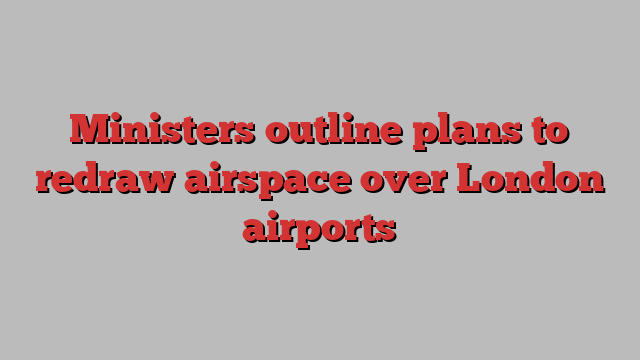
Unlock the Editor’s Digest for free
Roula Khalaf, Editor of the FT, selects her favourite stories in this weekly newsletter.
UK ministers have taken a big step towards redesigning the flight paths aircraft use to take off from and land at London airports, in a change that could lead to greener flights but also new noise pollution in parts of the capital.
The Department for Transport and the Civil Aviation Authority on Tuesday announced a consultation on the formation of a new “airspace design service” to redraw “the way planes fly in, out and over the UK”.
The review by ministers and the regulator will start with the heavily congested airspace over London and the south of England, with ministers vowing to modernise the “highways of the sky” that have barely changed since the 1950s.
Modernising the capital’s airspace offers the prospect of quicker and more direct flights that emit less carbon, but could mean new communities are affected by noise pollution.
The UK’s airspace infrastructure was first designed in the 1950s and 1960s, and based on a fixed network of “way points” that mirror the positions of obsolete ground navigation beacons.
Although the airspace infrastructure has since been refined to account for the rise in air travel, many big routes from major airports have barely changed in decades. Governments have pledged to modernise the UK’s airspace for more than a decade, but progress has been slow.
“UK airspace is one of the nation’s biggest invisible assets, but it’s been stuck in the past — a 1950’s pilot would find that little has changed,” said aviation minister Mike Kane, as he promised to make air travel “a better experience for all”.
More than 2.6mn aircraft fly through the UK each year, and a wholesale redesign would allow planes to climb and descend more efficiently and rely less on circling airports in holding patterns.
It would build on work by National Air Traffic Services, the UK’s air traffic control provider, which has in recent years redrawn airspace thousands of feet above south-west England, Wales and Scotland.
Martin Rolfe, Nats chief executive, said: “Any initiative that can help speed up the modernisation programme for UK airspace is very welcome, especially in London and the South East. It is some of the busiest and most complex airspace in the world.”
But some industry figures said trying to redraw London’s highly complex airspace was likely to be contentious because changes to flight paths could trigger new noise pollution.
Still, airlines have called for the changes in response to growing air traffic control problems, which have led to significant delays and cancellations for carriers including British Airways.
It is also part of the aerospace industry’s road map to lowering its carbon emissions to reach net zero by 2050.
Tim Alderslade, chief executive of AirlinesUK, which speaks for carriers, said reform of Britain’s airspace would “not only reduce delays and improve resilience for passengers and cargo operators in what is an increasingly congested system” but also help the sector “achieve net zero emissions”.